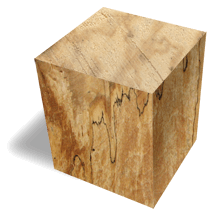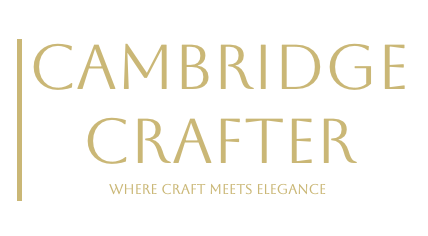
Spalted Maple
Spalted Maple refers to wood from the Acer genus, commonly Hard Maple (Acer saccharum) or Soft Maple (Acer rubrum) in North America, or Sycamore Maple (Acer pseudoplatanus) in the UK, that has undergone a natural fungal decay process known as spalting. These deciduous trees grow to 50–100 feet tall with trunk diameters of 2–4 feet, thriving in temperate forests across Europe and North America. In the UK, Sycamore Maple is more common, often found in woodlands, parks, and urban areas.
The heartwood of Maple is typically a pale creamy white to light reddish-brown, with Sycamore Maple often showing a golden hue, while the sapwood is nearly white, blending subtly. Spalting transforms the wood’s appearance by introducing fungi that create distinct patterns: dark zone lines (black, brown, or reddish) mark boundaries between fungal colonies, while white rot fungi bleach areas to a lighter, almost ghostly white, and pigment fungi add streaks of colour like grey, green, or pink. The grain remains fine and even but becomes highly irregular due to spalting, with a marbled or ink-like effect that varies dramatically between pieces. The texture stays smooth, with a high natural lustre that enhances the spalting patterns when polished.
Spalted Maple has a density of around 550–700 kg/m³, depending on the species—Hard Maple is denser at the higher end, while Sycamore Maple is slightly lighter. Spalting can soften the wood, introducing punky or brittle areas, which reduces its strength and durability compared to unspalted maple. It’s rated as non-durable to perishable, with poor resistance to decay and insects once spalted, making it best for indoor decorative uses unless stabilised with resin. The wood works well with sharp tools, but the irregular grain and softened areas can cause tearout or crumbling during planing or sawing, requiring careful handling. It glues and finishes beautifully, with clear finishes like oil or lacquer highlighting the spalting patterns, often used without staining to preserve the natural contrast.
When worked, Spalted Maple has a mild, slightly sweet scent, typical of maple, with no strong aroma, though some report a faint musty note from the fungal activity. In the UK, it’s prized for decorative projects like furniture, veneer, and turned objects such as bowls, pens, or spindles, where its unique patterns—often described as “otherworldly” or “hauntingly beautiful”—can be showcased. It’s also popular for live-edge pieces, knife handles, and inlays, frequently seen in bespoke British woodworking for its artistic appeal. Stabilisation with epoxy is common for spalted sections to ensure durability in functional items.
Spalted Maple isn’t a distinct species but a condition, so its availability depends on maple supply and the natural spalting process, often controlled by artisans who stack logs in moist, shaded conditions for 6–18 months to encourage fungal growth without excessive rot. Neither Acer saccharum nor Acer pseudoplatanus is listed on CITES Appendices, and both are considered of least concern by the IUCN, though Sycamore Maple can be invasive in the UK. Spalted Maple is moderately priced but can command a premium for well-patterned pieces, often sold through specialty suppliers or local sawmills. Its striking appearance, combined with maple’s workability, makes Spalted Maple a favourite for craftsmen seeking a one-of-a-kind, natural masterpiece.
